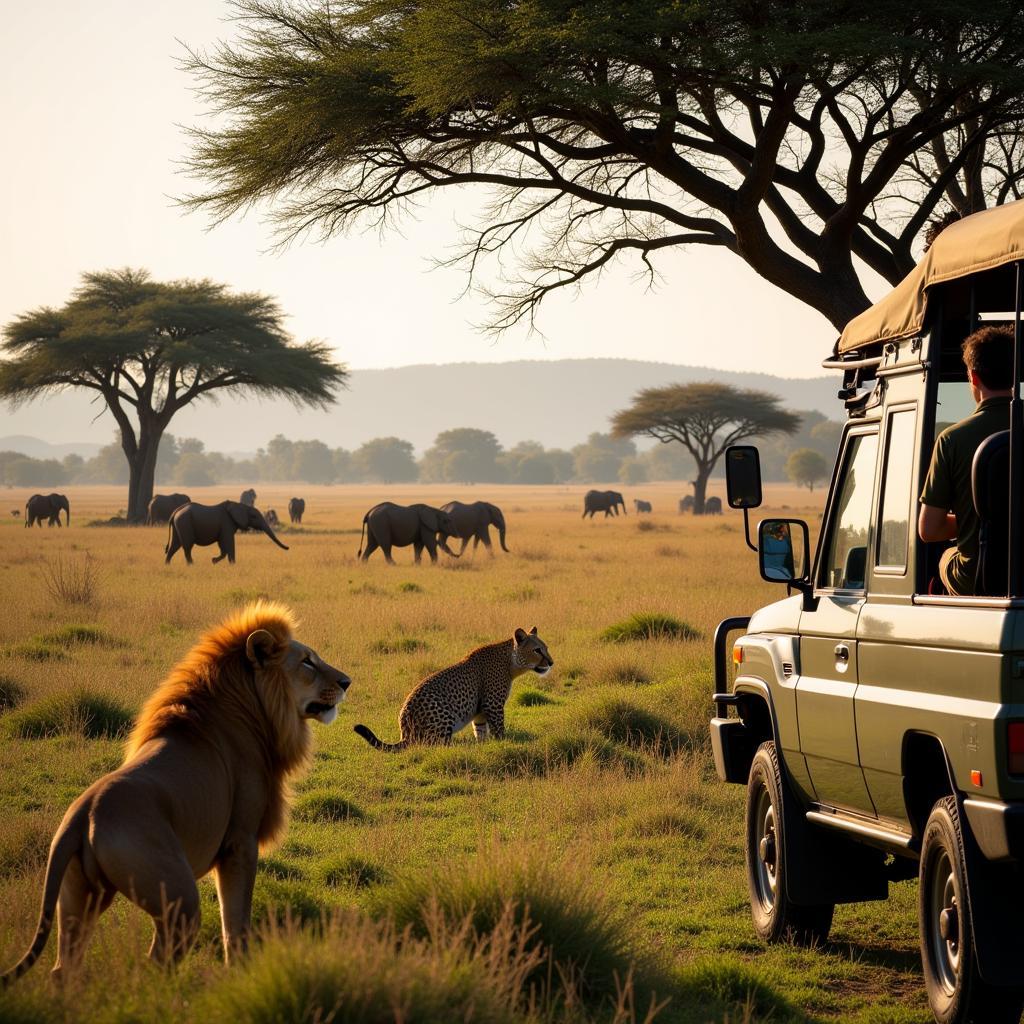African and Asian Elephant Meet: A Tale of Two Giants
When an African And Asian Elephant Meet, the encounter is a testament to the majesty and diversity of the elephant family. These two titans, though sharing a common ancestor, have evolved distinct characteristics shaped by their respective environments. This article delves into the fascinating differences and similarities between these two remarkable species.
What happens when these two giants cross paths? While a natural encounter is highly unlikely given their geographical separation, orchestrated meetings in zoos or sanctuaries can offer insights. Such meetings are carefully managed, prioritizing the animals’ safety and well-being. These controlled environments allow us to observe their interactions and understand their complex social dynamics. After this introduction, let’s delve into the differences between these two majestic creatures. african elephant ear shape provides more context on the distinct physical characteristics.
Distinguishing Features: African vs. Asian Elephants
African and Asian elephants, while both belonging to the Elephantidae family, exhibit striking differences in their physical attributes and behaviors. These differences are a product of millions of years of evolution in distinct environments.
Size and Appearance
The African elephant, the larger of the two, boasts larger ears shaped like the African continent, a helpful adaptation for heat regulation. Their tusks, present in both males and females, are generally longer and more curved than those of their Asian counterparts. Asian elephants are slightly smaller, with smaller, rounded ears and a more domed head. Their tusks, often only present in males, are generally shorter and straighter.
Habitat and Diet
African elephants thrive in diverse habitats, ranging from savannas and grasslands to forests and deserts across sub-Saharan Africa. Their diet consists primarily of grasses, leaves, bark, and fruits. Asian elephants, on the other hand, inhabit the tropical forests and grasslands of South and Southeast Asia. Their diet includes a wider variety of vegetation, including bamboo, grasses, and fruits. african countries map important illustrates the distribution of African elephants across the continent.
Social Behavior and Communication
Both African and Asian elephants are highly social animals, living in complex matriarchal herds. However, there are subtle differences in their social structures and communication patterns. African elephant herds tend to be larger and more fluid, while Asian elephant herds are smaller and more tightly knit. Communication within both species relies heavily on vocalizations, infrasound, and body language.
Can African and Asian Elephants Breed?
Although both are elephants, they are distinct species and cannot interbreed. african and asian breed explains the biological barriers that prevent interbreeding between these two species. Their genetic makeup differs significantly, preventing successful reproduction. This underscores the importance of conservation efforts tailored to each species’ unique needs.
Conservation Challenges and the Future
Both African and Asian elephants face significant conservation challenges, primarily due to habitat loss, human-wildlife conflict, and poaching for ivory. african elephant teeth explains the devastating impact of the ivory trade. Understanding the unique challenges facing each species is crucial for developing effective conservation strategies. african elephant facts wwf offers more information on the conservation status and efforts for both species.
Conclusion
The hypothetical meeting of an African and Asian elephant highlights the fascinating diversity within the elephant family. While these two giants share a common ancestry, their evolutionary paths have diverged, leading to distinct physical and behavioral characteristics. Understanding these differences is crucial for appreciating the unique beauty of each species and for developing effective conservation strategies to ensure their survival for generations to come.
FAQ
- What is the main difference between African and Asian elephants? African elephants are larger, have bigger ears, and both sexes have tusks, while Asian elephants are smaller, have smaller ears, and mainly males have tusks.
- Can African and Asian elephants communicate? While unlikely to meet in the wild, in controlled settings, they could potentially interact through basic elephant communication like body language and rumbling.
- Where do African elephants live? African elephants live in diverse habitats across sub-Saharan Africa.
- What do Asian elephants eat? Asian elephants have a diverse diet including bamboo, grasses, and various fruits.
- Why are elephants endangered? Both African and Asian elephants are threatened by habitat loss, human-wildlife conflict, and poaching.
- How can I help elephant conservation? Supporting reputable conservation organizations working to protect elephants and their habitats is crucial.
- What are the long-term impacts of the ivory trade? The ivory trade decimates elephant populations, disrupts social structures, and has devastating ecological consequences.
Other potential questions about the topic
- How do the social structures of African and Asian elephants differ?
- What are the specific adaptations of each species to their respective environments?
- What are the current conservation efforts for each species?
If you need any assistance, please contact us 24/7:
Phone: +255768904061
Email: kaka.mag@gmail.com
Address: Mbarali DC Mawindi, Kangaga, Tanzania.


